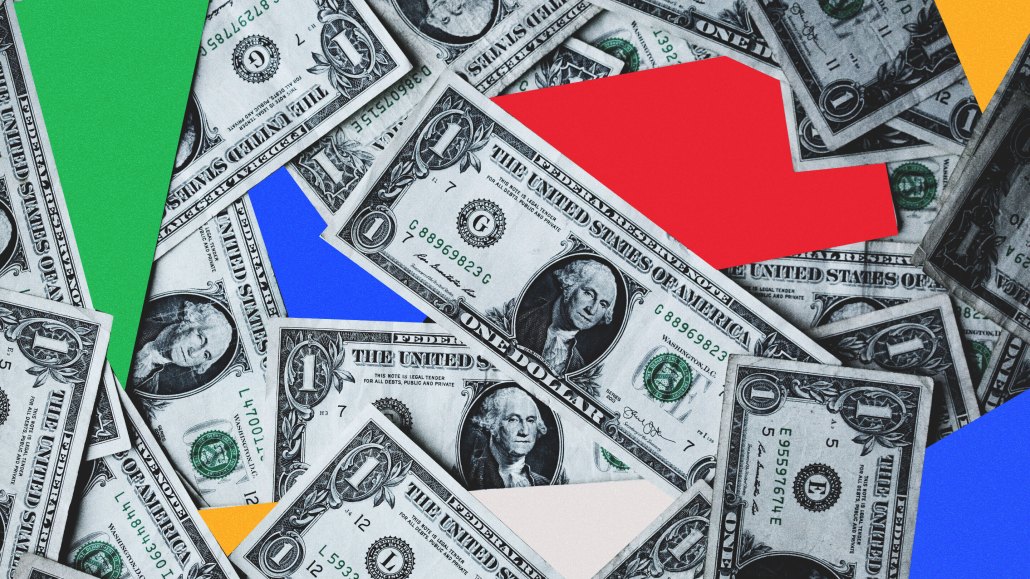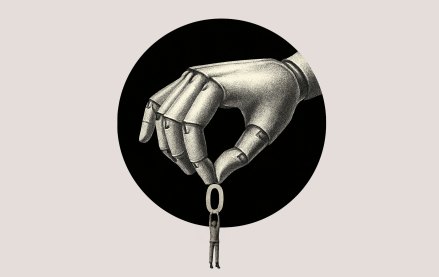Save 50% on a 3-month Digiday+ membership. Ends Dec 5.

Google built its empire on media dollars. Now, it’s eyeing the other side of the equation — creativity — with AI as its way in.
The signs have been piling up over the last 18 months but the clearest signal yet came last week at the annual Google Cloud Next.
In Las Vegas, the giant unveiled an expanded suite of content creation tools: Veo 2 for video, Imagen 3 for images, Lyria for music and the Chirp 3 model for custom voice tech, all designed to turn minimal input into maximum output. Execs did this throughout the event not just by talking about the technical capabilities of the tools but also showcasing how brands and agencies are already adopting them to create and scale multimedia content.
Here are some of the examples mentioned on stage during Wednesday’s keynote:
- L’Oréal is using generative AI to scale global content — making 50,000 images and 500 videos a month with Imagen 3 and Veo 2 — with custom content for various products, locations and demographics. The beauty giant also chose not to allow teams to create AI-generated people for ads.
- Google used generative AI tools—including Veo, Imagen, and Gemini—to transform the Las Vegas Sphere into the Emerald City from “The Wizard of Oz,” transforming scenes from the original film into a vivid 360-degree experience ahead of a new show debuting there in August.
- Kraft Heinz’s “Tastemaker” platform integrated Veo 2 and Imagen 3 to reduce content production from 8 weeks to 8 hours.
- Mondelez and Accenture are using Google Cloud’s content agents to create personalized text, images, and videos across global markets in hours instead of weeks.
- Reddit is expanding its “Reddit Answers,” powered by Gemini on Vertex AI, to personalize homepages with AI-curated conversation summaries.
Google also showcased the way agencies like Goodby Silverstein & Partners are using generative AI for content creation. The creative agency debuted a new trailer for an AI-generated film based on surrealist artist Salvador Dali’s screenplay, “Giraffes on Horseback Salad.” In collaboration with the Dali Museum, the agency used Veo 2 and Imagen 3 to transform Dalí’s notes and sketches into a cinematic experience that will also someday become a longer film.
By allowing for rapidly creating proof-of-concepts and prototypes, the agency sees generative AI to help early in the creative process for visualizing and selling ideas to clients. Jeff Goodby, GS&P’s co-founder and co-chairman, also cautioned that the output needs to be of a certain quality and that the wrong ones might fall into the “uncanny valley” and actually unsell an idea.
“I think people are still the arbiters and judges of whether the thing carries any emotion or not,” Goodby said. “We are the end-users that have to be pleased. Maybe at some point that will change, but it hasn’t changed yet.”
A film about a surrealist artist made for the “perfect alignment project with hallucinations and serendipity,” said Martin Pagh Ludvigsen, Goodby, Silverstein & Partners’ head of AI.
“That happens when you play with Veo 2 and things like it actually helped lead us toward a better product,” Pagh Ludvigsen said. “The thing is if you come up with a red sky in a BMW commercial, that’s not a good thing. But in Giraffes on horseback salad, that’s a good thing.”
Another example is WPP, which announced integrations for Veo 2 and Imagen 3 into WPP Open, the holding company’s proprietary AI-powered platform that integrates AI models, data, and workflows for creative, strategy, media buying and other efforts.
One thing WPP is testing is using AI content creation tools and agents to iteratively test synthetic focus groups based on what videos, images and text works best for various audiences. WPP’s Chief Technology Officer Stephan Pretorius said the company’s given broader internal access to even new tools like Veo 2 and Imagen 3 to encourage employees in every department to test more and develop new ways of using AI within the company. He also noted it’s already deployed 28,000 agents to employees for a range of tasks.
“When you bring new capabilities to a group of people, you shouldn’t be opinionated upfront about how they’re going to use it,” Pretorius said. “You should let them figure it out for themselves and then reflect on how they’re using it.”
Agency execs also see the benefits of combining content tools with other parts of an integrated AI stack. That’s why many were pleased to see a range of partners announced by Google, such as integrations with platforms like Adobe Firefly and Typeface along with more interoperability for even other clouds like Azure and AWS.
Emily Wengert, head of AI strategy at Huge, sees the potential of generative AI integrating with a range of other recently announced data and agent-related updates. Following its recent merger with Hero Digital — after being sold by IPG last year — Huge’s background in design and tech positions the agency in a new sweet spot amid the current generative AI momentum. “It’s the cowboy days again in the sense that you’re riding out on that frontier and trying to figure out what you want to do next,” Wengert said.
“We used to only worry about the pixels, and now, more and more, the data are my new pixels,” she said. “I care way more than I ever thought I would about technical infrastructure questions — when I can challenge decisions — because that actually helps me make better experiences….Those are end-user experience questions I’m expressing.”
All of this points to a larger shift. Google doesn’t just want to power the pipes of digital advertising anymore, it wants to shape what flows through them. By investing in generative AI for creativity, Google is positioning itself as co-pilot for content production. It also used Cloud Next to debut more AI content safeguards including enhanced watermarking, copyright indemnity and data governance.
It’s a natural extension of the giant’s dominance in media, albeit with a twist. If Google can own the tools that make the content and the systems that distribute it, it stands to redefine the economics of creativity itself.
That said, there are still lingering questions about Google’s execution of this plan. Gartner analyst Andrew Frank was impressed by Google’s AI leadership showcased through marketing applications, platform partnerships, and creative agents. He also noticed it seemed to sidestep two critical market tensions: compensation for content creators whose work trained these GenAI models, and consumer concerns about identifying synthetic media that appears remarkably lifelike.
“What surprised me most though was what seemed like a missed opportunity to address two related hot-button issues that are creating friction in the market,” Frank said. “…Google has addressed these issues elsewhere but it was disappointing not to see them in the keynote.”
More in Marketing

In Graphic Detail: Here’s what the creator economy is expected to look like in 2026
Digiday has charted its expected revenue, key platforms for creator content as well as what types of creators brands want to work with.

Ulta, Best Buy and Adidas dominate AI holiday shopping mentions
The brands that are seeing the biggest boost from this shift in consumer behavior are some of the biggest retailers.

Future of Marketing Briefing: AI confuses marketers but their own uncertainty runs deeper
That was the undercurrent at this week’s Digiday Programmatic Marketing Summit in New Orleans.









